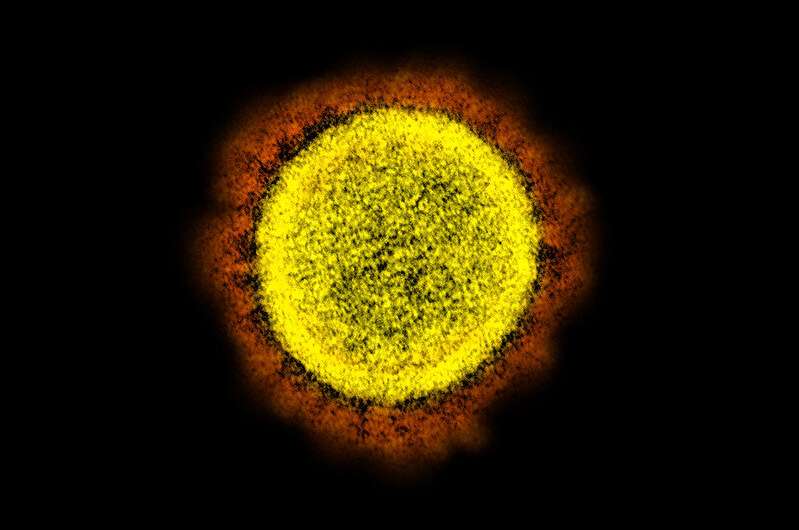aripiprazole order online canada
 generic cefixime supreme suppliers no prescription NIH” width=”799″ height=”530″>
generic cefixime supreme suppliers no prescription NIH” width=”799″ height=”530″>
New strains of the SARS-CoV-2 virus are emerging around the world, and evidence suggests that these new viruses—including a strain identified in the United Kingdom that seems to spread more quickly than others—have been circulating within the United States.
For help understanding the implications of these new strains of the virus that causes COVID-19, the Expert Insights website of the Johns Hopkins Bloomberg School of Public Health turned to expert immunologist Andy Pekosz. Pekosz is a professor in the Department of Molecular Microbiology and Immunology and holds a joint appointment in Environmental Health and Engineering.
Is this variant more transmissible and why? Could the increased numbers we’re seeing be associated with other behavioral or situational factors?
There is some strong data from the UK that suggest the [variant of the] virus is more transmissible. To be sure it’s the virus sequence changes that are causing this, we need to see if this variant spreads as easily in other countries.
There are currently two theories about what, specifically, makes this strain more transmissible. One is that this variant virus is “stickier,” meaning it requires a smaller amount of virus to cause infection because it’s better at adhering to your cells. Another theory is that this variant causes people to harbor more virus particles in their noses and throats, which means more virus is expelled when people talk, cough, or sneeze.
Behavioral and situational factors could help a more transmissible variant spread even further, but wearing a mask, ensuring physical distance, and hand washing will still help.
Is there a difference between “more transmissible” and “more contagious”? Why have experts been using the first phrase to describe the variant?
Transmission is often used when we talk about populations, while contagious is more often used when we are talking about an individual. They are interchangeable to some degree.
Is there any change in guidance for how to protect yourself and others from this new variant?
Those same interventions—masks, social distancing, and hand washing—should work against the variant just as well. But higher transmission could mean more cases, which can increase risk for individuals and overwhelm hospital systems again, so it may be necessary to re-implement closures and restrictions to flatten the curve if it starts to rise.
How common is it for a virus to mutate? How quickly does it typically happen—in other words, is it unusual to see a new variant of SARS-CoV-2 take hold this soon?
All viruses mutate, and SARS-CoV-2 has been mutating at a pretty consistent rate since it entered the human population.
This new variant has accumulated an extremely large number of mutations compared to other lineages. Usually we can follow the evolution of a virus because we find related viruses with fewer mutations. But with this virus, it seems to have just appeared with a lot of mutations. It will be important to determine how this virus got so many mutations without being identified sooner.
Why do experts believe that the currently approved vaccines will work on the new variant? Why is this different from flu shots, which we have to get every year, for instance?
From looking at the mutations in the spike, or S, protein of this new variant, it seems the virus should still be susceptible to the antibodies induced by the vaccine.
Scientists are verifying this now. Influenza mutates at a faster rate than SARS-CoV-2, and it seems to handle more mutations in its genes, which makes it more likely to evolve resistance to preexisting antibodies. We don’t yet know how well the SARS-CoV-2 S protein can tolerate mutations, so it’s difficult to predict if it will eventually behave like influenza and force us to update the COVID-19 vaccine. Fortunately, the technology used to make the Moderna and Pfizer COVID-19 vaccines is easy to update for a new lineage or strain of S protein.
It’s been said that when some viruses mutate to become more transmissible, they lose some of their potency—in other words, they become less likely to cause severe disease. Is that accurate, and, if so, is that reasonable to expect with SARS-CoV-2?
The initial data suggest that the new variant causes the same amount of disease as the other SARS-CoV-2 lineages. However, some viruses have to cause a certain amount of disease in order to spread—you have to cough or sneeze to effectively spread influenza, for example. In the end, it’s all about transmission. The virus doesn’t care how much disease it causes; it just has to be transmitted.
Will the new variant eventually be more widespread than the current virus?
If the new variant is more transmissible than other SARS-CoV-2 lineages, it eventually could be the most commonly found lineage of SARS-CoV-2. However, while we still have so many people with no immunity to the virus, we should still see different lineages spreading in different parts of the world.
Is it possible that the virus could mutate to the point that it’s as transmissible as measles or another more contagious virus?
Source: Read Full Article
